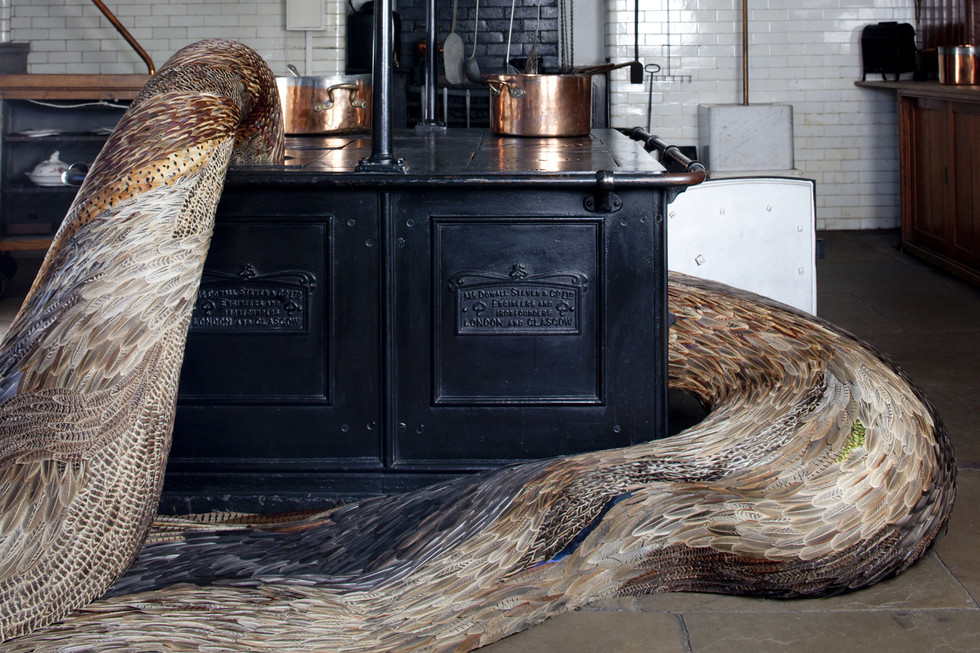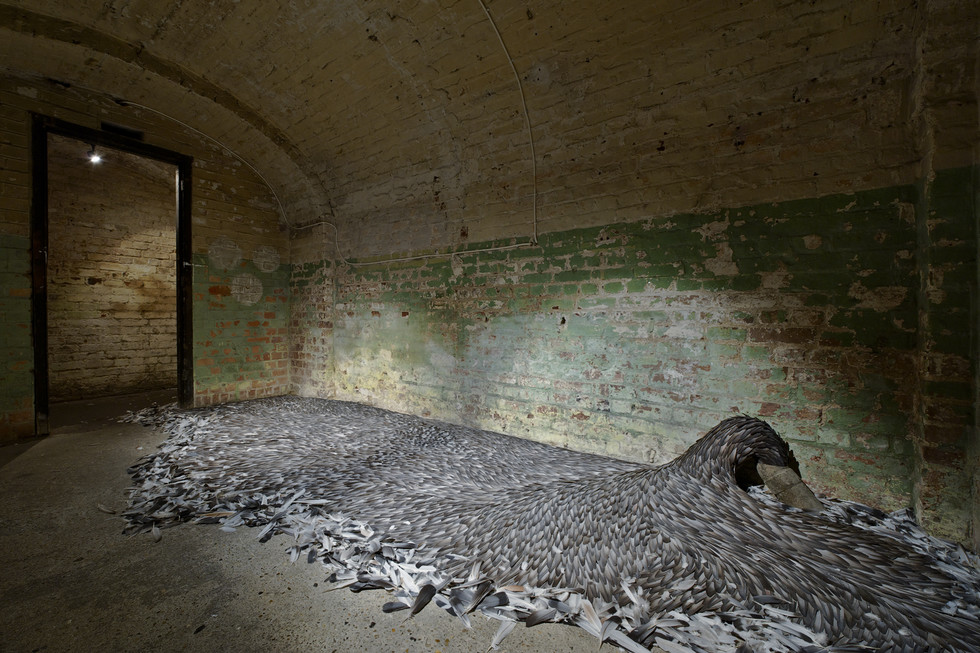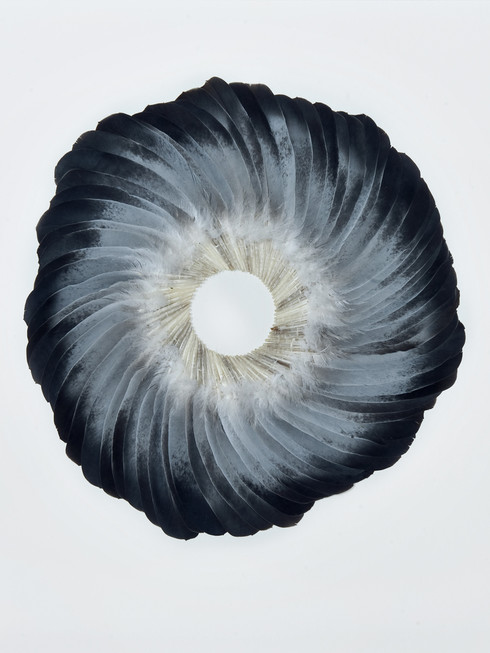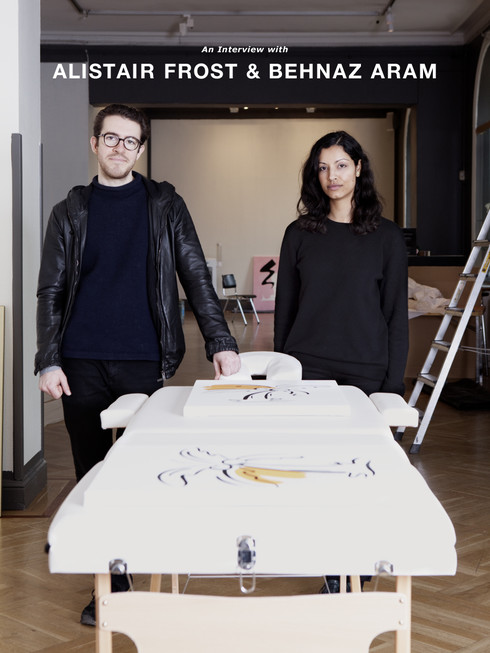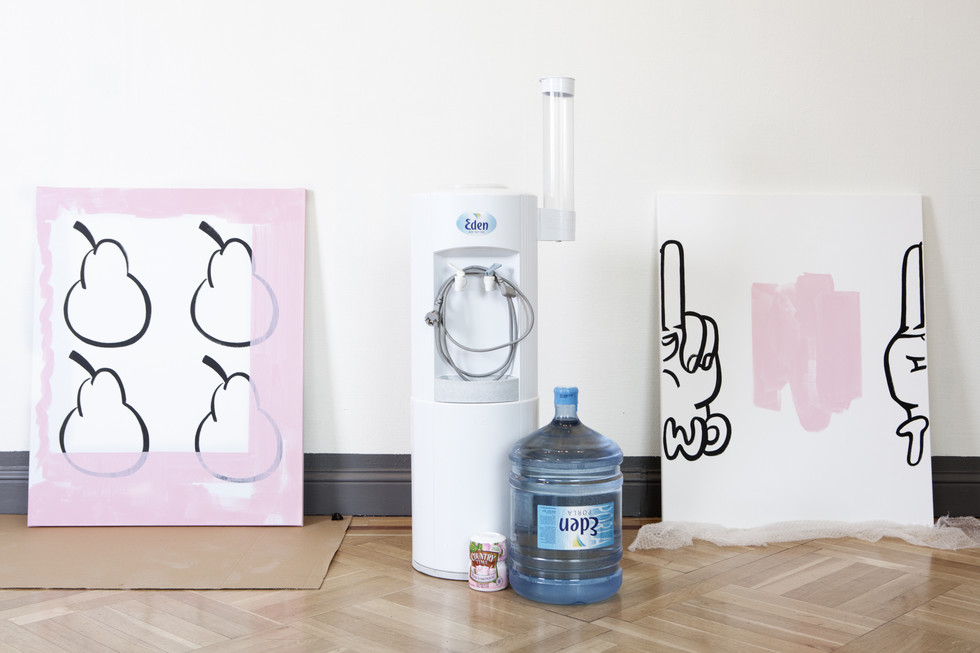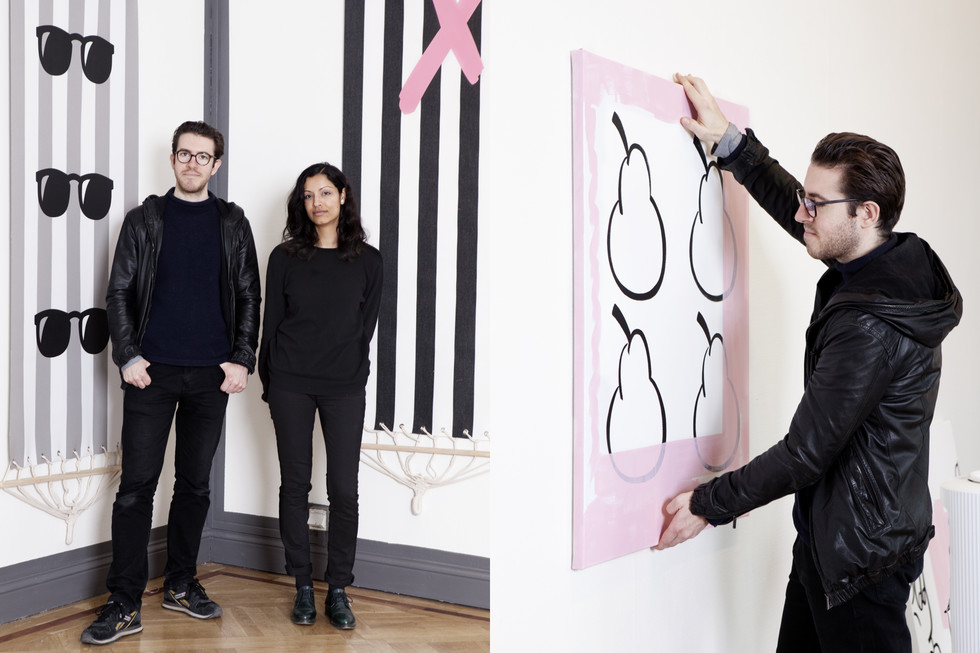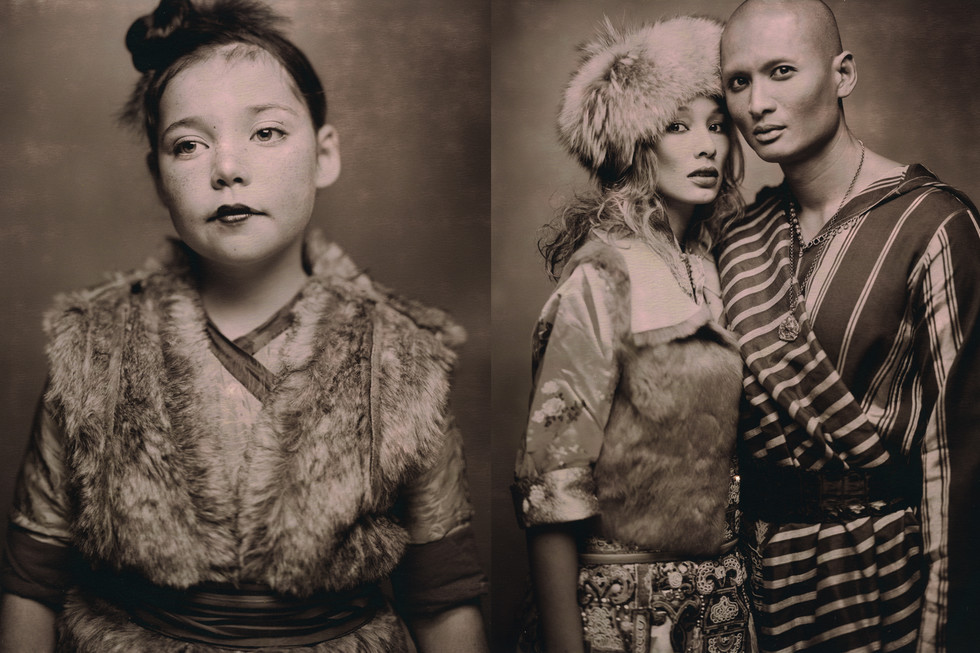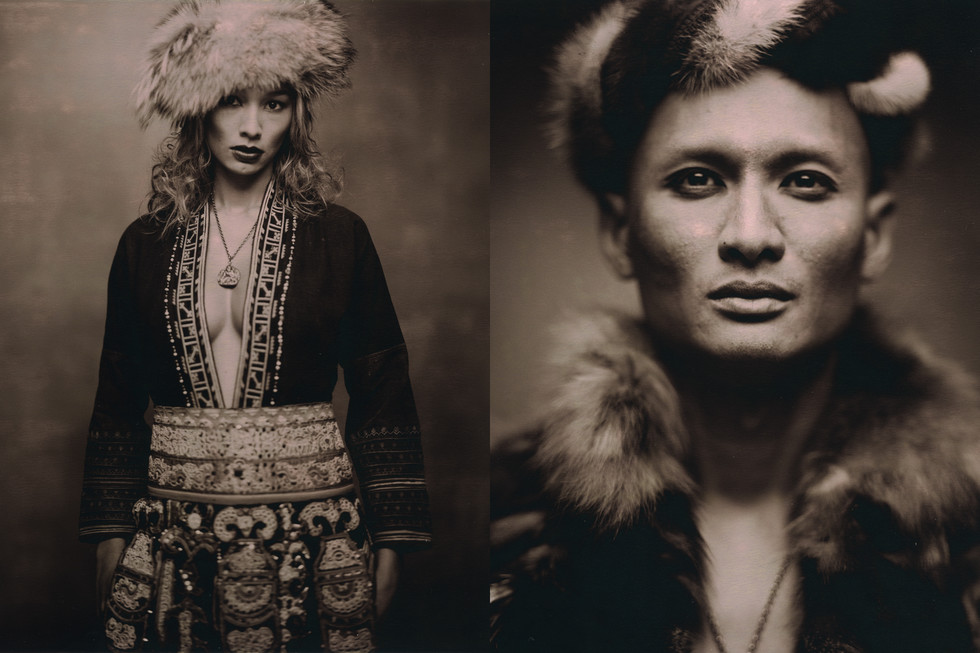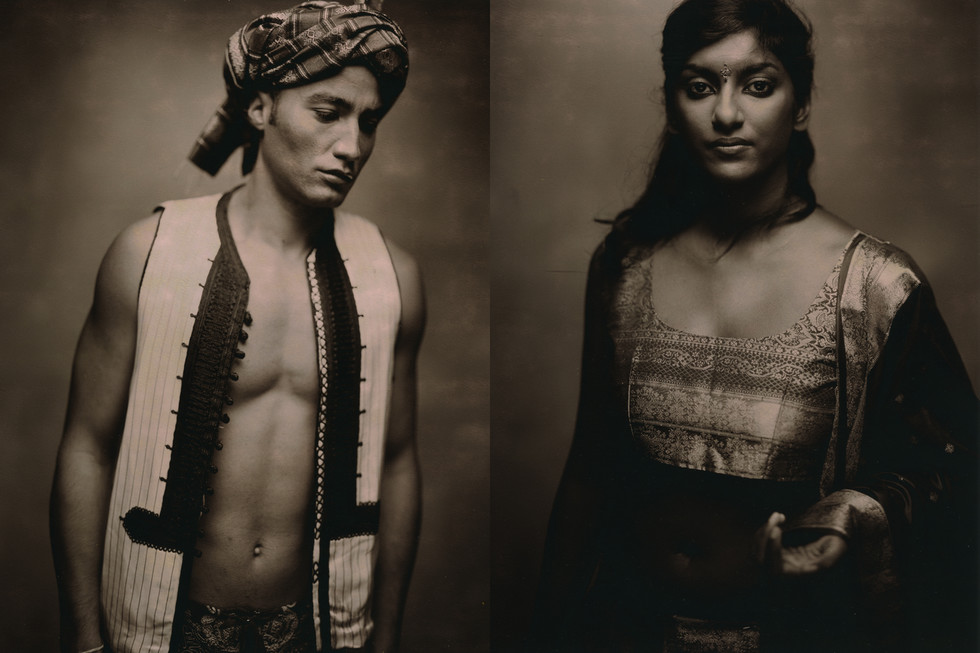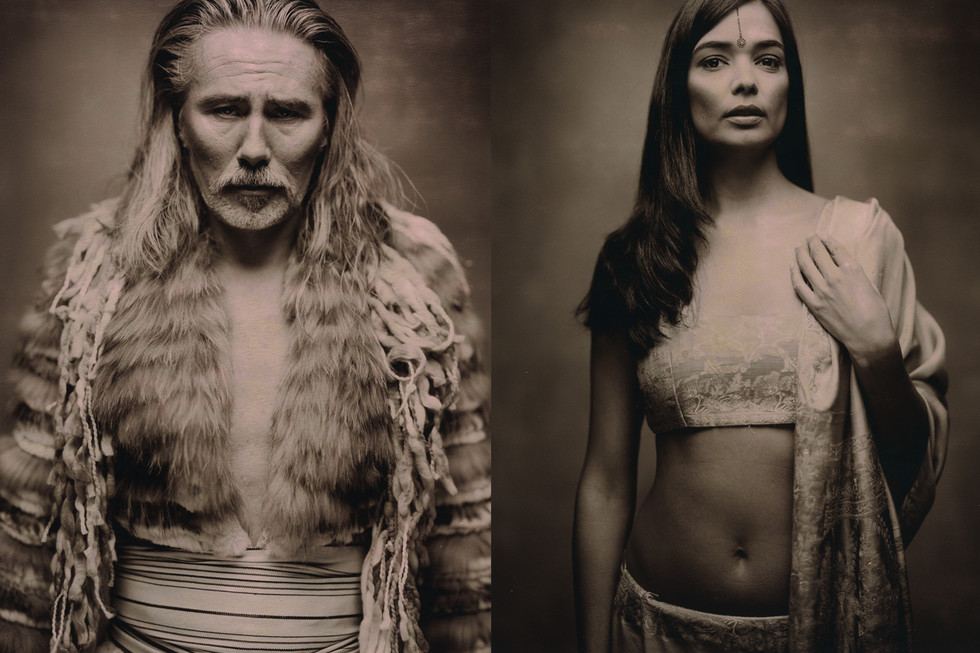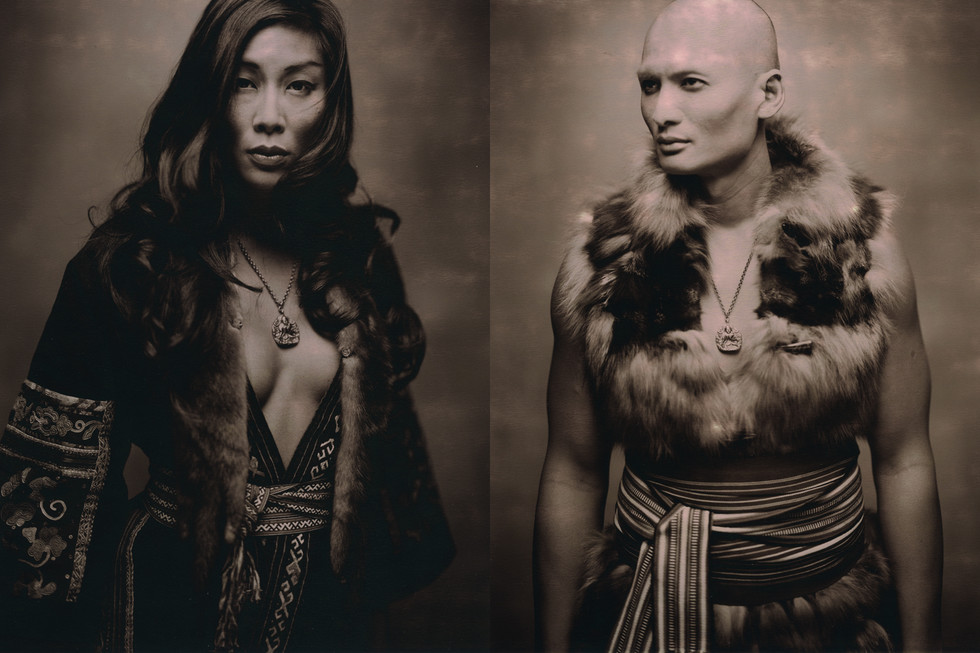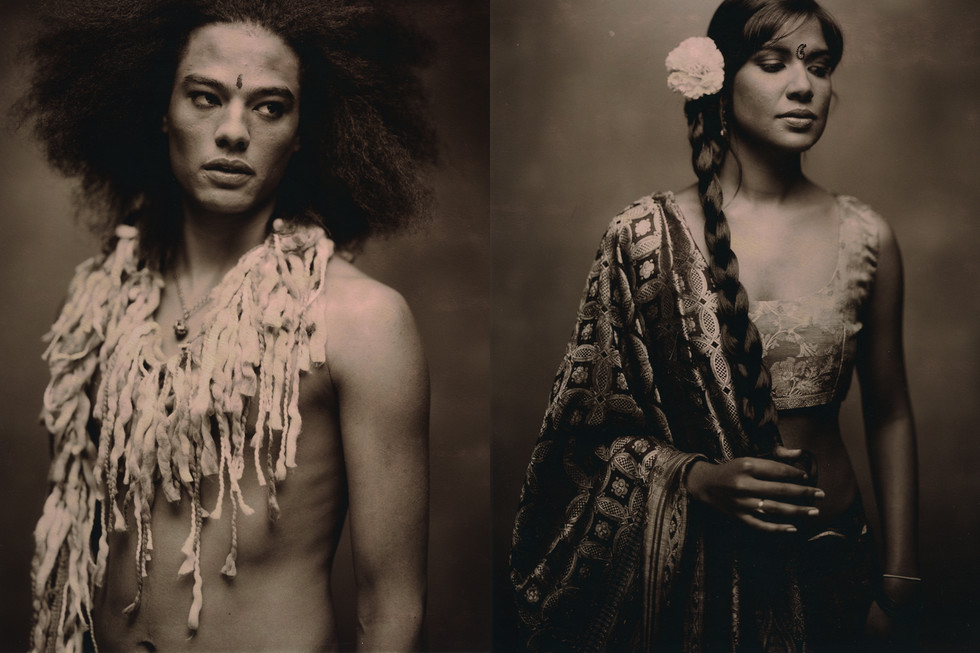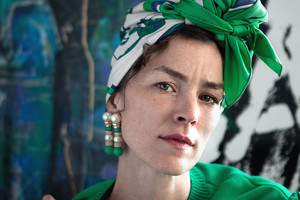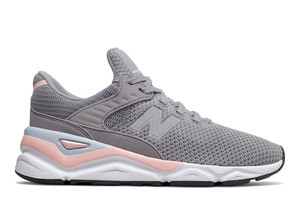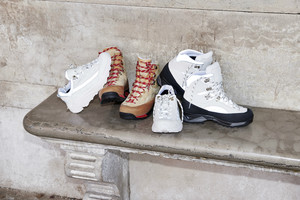An Interview with Kate MccGwire
Written by Matilda LundbergShe describes herself as a sculptor, gatherer, hoarder, collector and creator. She is infatuated by feathers, fascinated by the uncanny and the binary concepts of darkness and beauty. Kate MccGwire is a London-based artist who makes works of art that catches and allures the viewer. Inspired by the way the world works she uses old feathers to create new life.
How does a normal day in your life look?
Generally my day starts with a walk along the river with Tilly, our ‘studio dog’. It’s a great way to get the day going and means I get to pick up all sorts of feathers. Mostly pigeon, but also wild parakeet feathers – there’s a rumour that they escaped from nearby Shepperton Studios during the filming of The African Queen (1951) but they’re more likely just escaped pets, which have flocked to the open spaces outside central London. My walk ends with a short boat trip across the river to my studio, a Dutch barge moored on an island on the Thames. I then light the wood-burning stove, make a mug of tea and check emails. If there’s a piece of work in progress I’ll start on it around 10am and carry on until lunch. The whole studio stops to eat so if I have any assistants in we all make lunch together and talk about upcoming projects. The day ends around 6pm but I often stay much later; time flies when I’m really stuck into a project.
Where do you find inspiration?
The peculiarities of the everyday are inspiring to me; the contradictions, patterns and impossibilities of nature are a source of endless fascination. I’m constantly in awe of how the world works on both a micro and macro scale. From the precise engineering of a feather to the patterns of a murmuration of starlings, the world is a boundless muse.
You use a lot of feathers in your artworks, where do you find them all?
It depends. The pigeon feathers come from a network of pigeon-fanciers I’ve been building up over the last five years. By necessity I’ve had to immerse myself in the pigeon-racing world and I can’t tell you how supportive they’ve been. I once took a stand at one of the annual pigeon-racing shows in the far North-East of England; people were asked to bring along bags of feathers from their pigeon coops and in return got their names put into a hat to win a work. It all felt a bit incongruous but I was made to feel very welcome – the fanciers seem to love the fact that I’m making something beautiful out of their precious birds’ moultings. The birds shed their feathers twice a year, in April and October, so there are just two windows of time in which to gather in as many feathers as they can send me.
The crow, jackdaw and magpie feathers come from local gamekeepers; the birds themselves may not be cherished by the farmers whose crops they destroy but their feathers are – at least by me. The business of collecting the materials and creating the works feels satisfyingly intertwined and creates a kind of virtuous circle all of its own. Relying on the goodwill of all these individuals gives a human dimension to the collection process, which is mirrored in the many hands required to actually make the work.
Take me through your work process, how do you create your artwork?
I reflect, consider and fabricate pieces over and over again in my mind before I ever commit anything to paper. The mind is a malleable canvas, while physical mistakes can be hard to undo, I can work through the design and practical considerations in my head before I begin to work. Once a sculpture is started the form and scale will have been decided and the process becomes much more meditative.
When you create your pieces, do you always have a clear image in your head how it will turn out, or do you realize as you work?
I design and create through making, so letting my materials guide me is very much a part of the process. The patterning and movement in the feathers is what brings the pieces to life, this is something you get a feel for and not something you can pre-plan. I frequently have more than one work on the go at once so it’s a cyclical, endless process, which becomes completely immersive. I often look back at a finished piece of work and think ‘did I make that?’ It’s like they have a life of their own. This is in contrast to the realization of the forms as while the process of feathering is very fluid, the structural elements of the work must be finalized before I start. Once I begin to apply the feathers to the form, the piece can’t be edited without damaging the work, so those choices have to be made at the beginning.
Your artworks look like you have put a lot of time and effort into them, how do you know when you are finished with a piece?
I find that handling, cleaning and sorting enables you to understand your materials on a more intimate level. By learning and creating through touch you can get a much better feel for the work. The process of making becomes more sensory, even meditative, and you can lose yourself in the act. This makes it difficult to finish with a piece as I am forever fiddling with them, tweaking and touching here and there. I get very attached to my works and really hate them leaving the studio, there’s always a massive void when the work that I’ve been living and breathing departs for an exhibition.
Is there one work of art that you made that is extra special to you (and if so, why that one)?
Gag has always been one of my favorite works. There’s a certain harmony to it, which was immensely satisfying to create. It worked so well within its cabinet, perfect shape and size to seem at once trapped and seething. It’s a work that has always stayed with me.
Do you have a dream project that you have not yet had the chance to do?
I would love to create a series of cabinet works to show within the setting of a natural history collection. I think the juxtaposition of the authentic and the inauthentic objects would really mess with your head. While the case gives the work the impression of a genuine specimen, it is at once alien and isolated within the familiar framework of natural history. I touched on this when I exhibited Discharge at the Palaeontology & Compared Anatomy Galleries in Paris as part of Nuit Blanche but I think taxidermied specimens would provide a more uncanny backdrop than the gorgeous parade of skeletons in the Paris Natural history Museum.
Finally, what comes next for you, what will you be up to this spring and summer?
I’m currently working on numerous private commissions as well as a new body of work and preparations for a solo show in Winchester in June. Plus I’ll be heading back to Paris in the autumn, but that’s under wraps for now, I’ll have to keep you posted!
Kate MccGwire
March 2013
www.katemccgwire.com
www.allvisualarts.org
WONDERFUL - Group Show
29 November 2012 – 28 April 2013
me Collectors Room, Berlin
LURE - Solo Show
Winchester Art Gallery, The Discovery Centre
21 June – 28 August 2013




